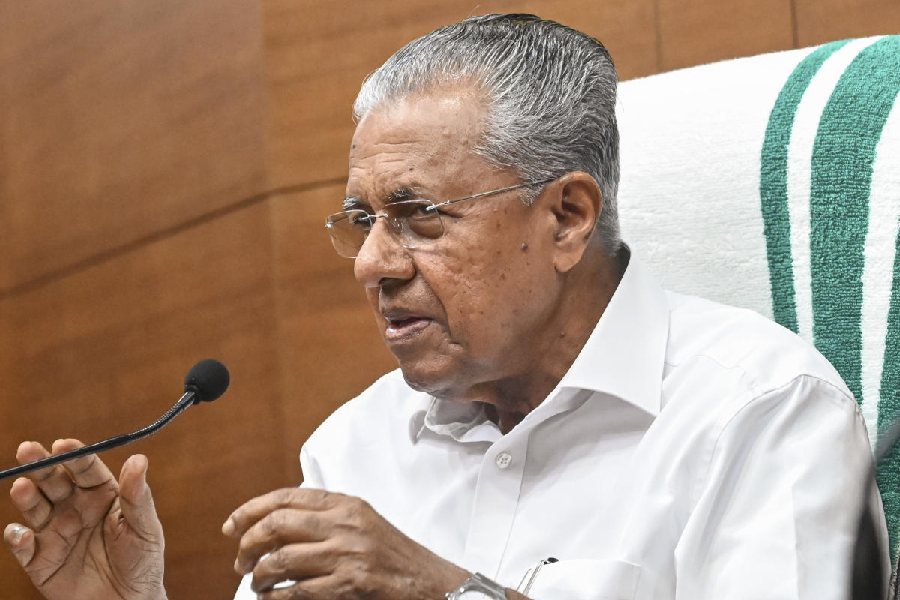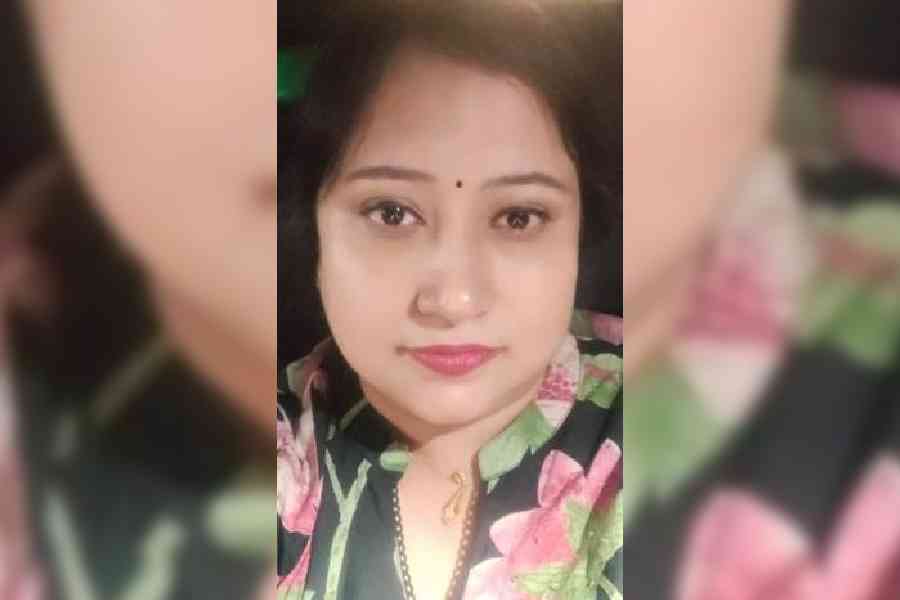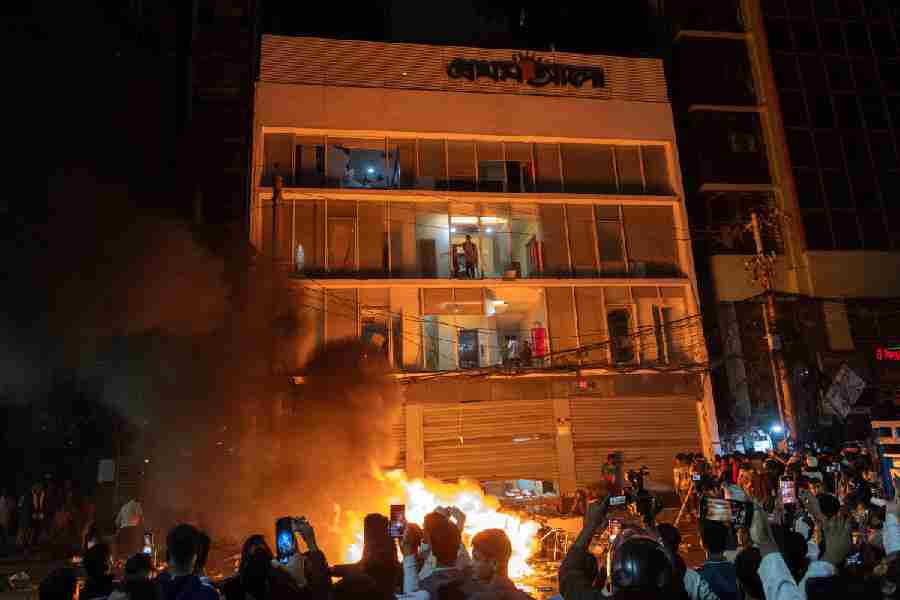 |
| Seasoned performance: A scene from Phataru (Picture by Sanat K. Sinha) |
If anarchy speaks through the stagecraft, author Nabarun Bhattacharya’s political and social consciousness speaks even louder through the many voices in Phataru. The idea of Phataru ? a winged human being with special powers who spreads havoc, and is essentially a subaltern obverse of a regular superhero ? was developed in a series of Bhattacharya’s works. Director Debesh Chattopadhyay preserves most of these qualities in this dramatic version. The satire, a vicious commentary on Bengali social mores, is in the same vein as Chattopadhyay’s earlier Winkle Twinkle.
The actors put up a seasoned performance, especially the trio of Swapan Roy (Madan), Jayanta Kanjilal (D.S.) and Rudranil Ghosh (Purandar Bhat). Ghosh is hilarious as the poet Bhat, who, as his name indicates, is the author of some quality bad verse. Since the poet in him is fully aware of the subversive quality of words, most of his poetry gives full play to expletives.
Flying becomes an interesting metaphor in the course of the play. The Phataru host cuts through a cross section of social strata as lords of misrule ? turning things topsy turvy and generally making merry. But their ability to fly allows them to remain curiously aloof from the scenes of squalor below. As they move from one spot to another, the city below them becomes a nightmarish vision of bordellos, shady parks and glitzy and meaningless felicitation ceremonies. But before they can get too involved at any one scene of action, they have flown off on a new mission.
Cadaverous, the second Sansriti play of the morning, discards all sense of a conventional plot for a brilliant 40-minute technicolour production on a contentious issue ? starvation deaths in rural Bengal. According to the director, the play has no author, but emerged out of the workshops the group conducted. The village of Hamlapol (the reference to the Amlashol tragedy is obvious) becomes the stuff of a news editor’s dreams, when 23 people die of hunger. The play develops by exploring contrasting viewpoints ? of the politician, the media hack and the local tough ? and what they think about the tragedy. The effect is hilarious, as each group tries to serve its own interests best. For the political parties the issue is quickly reduced to a slanging match, while the mediamen think about the appropriate sound bytes. The people of Hamlapol are forgotten.
The play borrows some features from the nautanki tradition, with some boisterous dancing and with a couple of musicians who sit at one corner of the stage and exchange repartees with the actors. What is even more impressive is the use of props, which consist of a stick and a dupatta in the hands every actor. Both are used in a variety of ways, serving as everything from political flags and barricades to the bed on which a dead body is carried to the funeral pyre.










